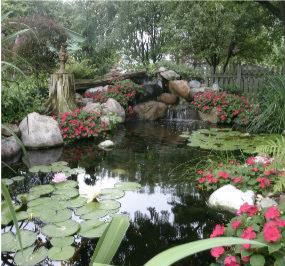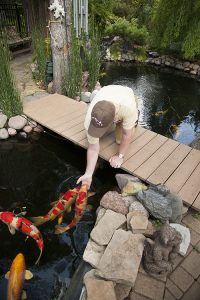Type of plant:
- Aquatics: emergent plants (e.g., arrowhead, pickerelweed), floating leaf (water lilies), submerged (e.g., tapegrass)
- Wetland plants can be planted in damp areas at the pond’s edge but will not tolerate standing water.
Climate:
Select plants suitable for your hardiness zone.
Plant cover:
A matter of taste, but generally the area should have less than 70% plant cover.
Sources:
- Your supplier should provide plants identified with common and scientific names.
- If you plan on collecting native plants or fish, check wildlife regulations on wild collection; collection and possession of certain species is regulated by state fish and wildlife agencies or natural resource agencies.
- Inspect wild-collected plants carefully to make sure there are no pests or other species in the roots, stems, or leaves.
- Before purchasing plants from online sources,
- Check interstate shipping regulations
- Make sure that the plant(s) are not restricted or prohibited in both the shipper’s state and your state. Refer to the regulated plant lists for more information.
Fish:
If you plan on adding fish, use native species or ornamental species that are not invasive.
- Some fish (koi) will “graze” or injure aquatic plants.
- Native wading birds (herons, egrets, kingfishers) may prey on fish in your pond koi, goldfish.
- Some water gardens feature fish species that control mosquitoes (mosquitofish, topminnows).